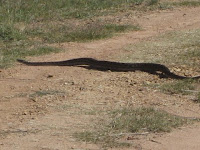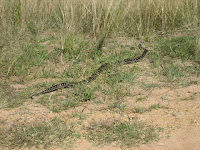In the next couple of weeks when the community water scheme becomes operational we propose cleaning our 104,000 litre Rhino polyethylene lined steel rainwater tank given that the community scheme supply will be high quality clear bore water. We want to clean the tank given:
- To date we have been using dam water which is not clear due to natural tannins. It may also have contained some sediment that will have settled on the tank bottom
- We have had some challenges with frogs living in the tank and they naturally produce excrement. We do know that they were able to access the tank for a while due to some vermin proofing being missing when the initial installation was done and it is also possible frogs’ eggs entered the tank from the gravity fed dam water.
We’ve been in contact with the team at Rhino Tanks to seek guidance on how best to approach the cleaning task. The main things to remember in cleaning this type tank given it was filled with dam water are below.
Getting Started
- Make sure it isn't a windy day as the liner will blow around and move inside the tank and give you all sorts of trouble when you fill it up again.
- Take the first and last roof sheet off for ventilation
- Test the air for hazardous gasses with a Gastec machine and purge the tank if needed
- To begin the draining process grip the scour drain pipe as well as the bung when loosening or tightening to prevent the drain pipe from twisting
- If using a separate ladder from ground level to access the man-hole ensure it is stable
- Given the edge of the man-hole is sharp it is not a bad idea to wear gloves until you are in the tank
Doing The Cleaning
- Don’t wear shoes or waders as you won’t be able to feel for any rocks or lumps under the liner or in the tank
- Lightly sweep the sediment to the scour drain with about 150mm of water still in the tank
- Clean/flush the tank with just water and don’t use any chemicals or cleaning based products as you would only be dissolving soil based solids
- If using a hose from, say, a fire fighting pump the water pressure must be no stronger than low pressure. Don’t use a pressure washer.
- A soft horse hair broom can be used if you have one, but nothing with stiff bristles.
- With shoes removed swirl the water around to stir up the sediment and drain through the scour valve.
Refilling the Tank Post Cleaning
Make sure the liner hasn't moved or twisted. Reset the liner with the floor to wall seem in correct location as the water is running in
Frog Removal Tips
Some tips in getting frogs out of tanks (including poly tanks) based on our recent experience are below:
- Ideally the water depth should be knee depth or lower
- To locate the frogs use a very strong torch or spotlight
- Remember to check every little nook and cranny for frogs, including the hole under the intake float valve and on top of it PLUS under the lid of the tank itself
- Frogs seem to be able to stay under the water for several minutes so be prepared to stay in the tank for quite some time in order to ensure you locate them all
- It is much easier to catch the frogs using a flexible net, obviously with no sharp edges
- It is also a good idea to have someone outside the tank at the same time, for occupational health and safety reasons and to assist in spotting the frogs in the water
- Turn the torch off at some point for a while to see where light is entering the tank. Gaps will need to be filled to prevent frogs returning.











